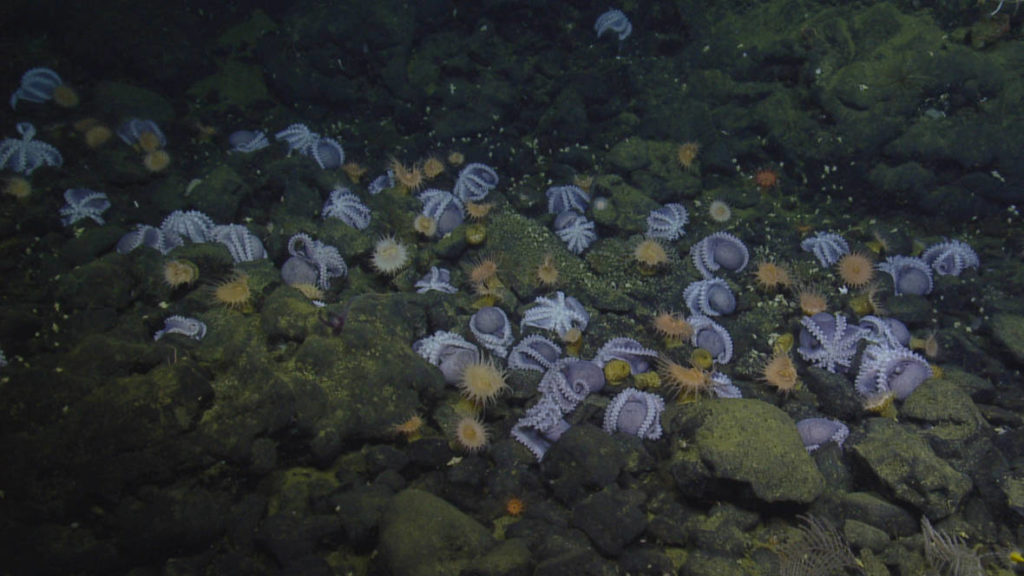
Davidson Seamount Octopus Nursery – NOAA Photo
Scientific inquiry has always been characterized by reaching out into the unknown and illuminating our findings. From Galileo fixing his telescopes into the firmament and Leuwenhoek peering at the microscopic denizens in a drop of water; from the Phoenicians setting their sails across unknown horizons, to our sending spacecraft out into the outer reaches of our solar system – and even landing probes onto asteroids!
As culturally transformative as these epic explorations have been, they have all been characterized by someone making a supposition – or a hypothesis, squaring that with what was known, and embarking on a mission to capture results.
The sea, on the other hand, often offers up the keys to her mysteries even when we are not asking questions.
Recently data were published from an Autonomous Underwater Vessel (AUV) operation performing environmental baselines in a proposed deep sea mining area. The mission discovered many deep depressions, or tracks in patterns associated with whale activities. But these were at over 4250- meters – or two-and-a-half miles deep!
This was not what they were seeking. And at that depth, with pressures of over 400 atmospheres (6000 psi) nobody would have hypothesized that animals commutating with the surface would withstand those sort of forces. (By comparison; an atmosphere is 14.7 psi – which is the pressure that holds our bodies together in our terrestrial habitat.)
Another recent AUV voyage on the Davidson Seamount off California’s Outer Continental Shelf stumbled into an octopus’ nursery at 1300m deep (not quite a mile). Of course these octopuses probably always live at this depth and don’t have air-bladders (like lungs) to compress, so the depth-pressure gradient is equalized in their tissues.
But what is remarkable here is the close assembly of an animal that is usually considered non-social.
The octopuses we know (mostly the Giant Pacific octopus Enteroctopus dofleini) are really complex animals. With both a distributed and central nervous systems, they seem predisposed to learning fast through comparative analysis; they have distinct personalities and can recognize individual humans even after not having seen them for a couple of years. They love their babies; breed once, and then die.
This particular dive revealed two new species of sponge as well. Actually, almost any dive in the sea will reveal a new species of something if that is what the scientists are seeking.
We can only know what we know. But as our technologies and curiosity allows us access to the deeper and darker depths of the ocean, we find that she is generous with the keys to her mysteries.
The sea conceals so much, but provides so much just for the asking. What better place to reflect this season of gratitude.
Happy Thanksgiving!

